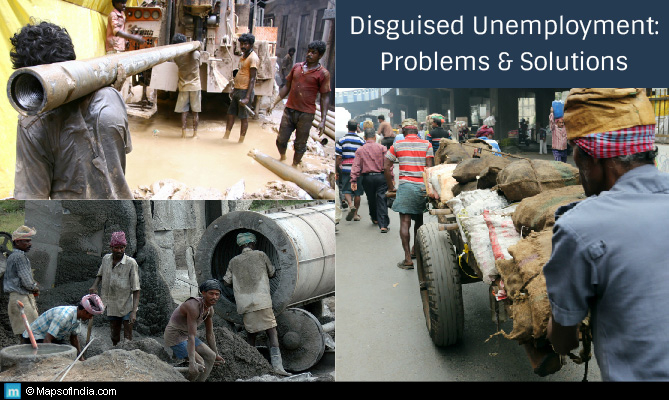Higher unemployment and low income in the rural areas results in low purchasing power of the rural people, ultimately affecting their quality of life. The government has launched several schemes to generate employment especially in the rural areas. Data provided by the National Sample Survey (NSS) indicates unemployment in the rural areas has increased from 7.2% in the rural areas in 2000 has increased to 8.1% in 2010.
To achieve growth with equity and social justice, the government of India has been implementing specific poverty removal plans since the Fifth five-year plan (1974 – 1979). The most recent initiative under the wage employment programmes is the launch of the Mahatma Gandhi National Rural Employment Guarantee Act (MGNREGA) in 2006. Initially implemented in 200 districts, during the financial year 2006-2007, it was extended to 330 districts and finally to 615 districts during the financial year 2007- 2008. Although MGNREGA focuses on planning productive absorption of under-employment and surplus labor force in rural areas by providing up to 100 days of direct supplementary wage employment generation in the rural households, the decline in person-day employment has become an issue of concern.
Some other Government schemes to eradicate rural unemployment include:
- National Rural Employment Programme (NREP) (1980): Launched to use the unemployed and the underemployed workers to build community assets.
- Rural Landless Employment Guarantee (RLEG) (1983): Launched to provide 100 days of guaranteed employment to one member from each rural landless household.
- Jawahar Rozgar Yojana (JRY) (1989) :The programme aims to alleviate poverty through creating supplementary employment opportunities for rural poor during agriculture recess period.
- Employment Assurance Scheme (EAS) (1993): Launched to provide employment during lean agricultural season. The primary objective of EAS is to create additional wage employment opportunities during the period of acute shortage of wage employment through manual work for the rural poor living below the poverty line.
- Jawahar Gram Samridhi Yojana (JGSY)(1999) : Launched to create demand-driven community village infrastructure including durable assets at the village level and skills to enable the rural poor to increase the opportunities for sustained employment.
- Swarna Jyanti Gram Swarojgar Yojana (1999): This Yojana is a holistic package covering all aspects of self employment such as organization of poor into self help groups, training, credit, infrastructure and marketing. A credit-cum-subsidy programme, the beneficiaries under this scheme are called swarojgaris. This scheme is being implemented by the central and the state government on a 3:1 cost ratio.
- Sampoorna Gramin Rozgar Yojana (SGRY, 2001) : Launched merging JGSY and EAS, this programme aims at providing wage employment.
- National Food for Work Programme (NFWP, 2004) : Launched with the exclusive focus on the 150 identifed backward districts. The aim was to generate additional supplementary wage employment and create assets.
- National Rural Employment Guarantee Scheme (NREGS, 2006) : Launched to provide 100 days of guaranteed employment to one member from each rural household and create community assets.
- Prime Minister – Rural Employment Generation Programmes (2008): The objective of this programme is to generate employment opportunities in rural as well as urban areas through setting up of new self employment ventures/projects/micro enterprises. The scheme is formulated by merging Prime Minister’s Rozgar Yojana (PMRY) and Rural Employment Generation Programme (REGP).
- Rural Self Employment training Institutes (RSETI’s): These institutes are being established in most districts of the state for imparting training to rural BPL youth in collaboration with the leading district banks. The state government will provide land free of cost for these institutions to the concerned leading banks.
- Prime Minister’s Shram Awards’ Scheme (2012): The objective of this scheme is to recognize the outstanding contributions made by workmen as defined in the Industrial Dispute Act 1947, in organizations both in public and private sector.
It is imperative to generate employment in agriculture and industry in this country to feed the hungry poor of the rural areas. Agriculture is the lifeline of rural India and the need to make it more viable and profitable is undeniable.
Related Information :
Employment Exchanges becoming National Career Counseling Centres (NCCC)
Skill India Programme
Disguised Unemployment in India
Democracy in India
Unemployment in India
Problems faced by youth in india
Reservation or quota system in India
Poverty and its causes in India
Causes of rural poverty




